Ultrasonic Metering Systems
Ultrasonic metering systems are widely used in a range of industrial applications to measure the flow of fluids in pipes and channels. These systems utilise ultrasonic waves to measure the flow of fluids, and can be classified into two types: contact and non-invasive ultrasonic metering systems.
Showing all 7 results
-

New Portaflow 222 Portable Clamp-on Flow Meter
Read more -
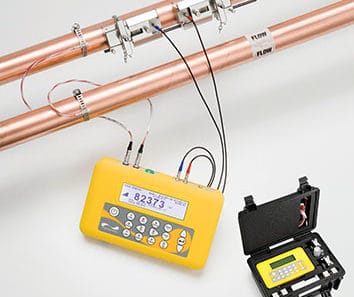
New Portaflow 333 Portable Clamp-on Flow & Heat Meter
Read more -
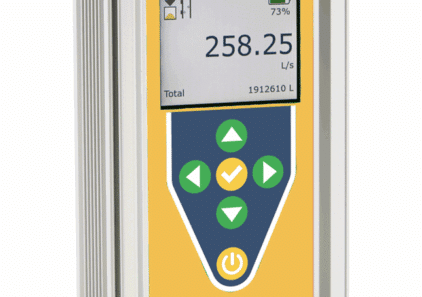
Portaflow D650 Doppler Flow Meter
Read more -

U1000MKII-FM Fixed Clamp-on, Ultrasonic Flow Meter
Read more -
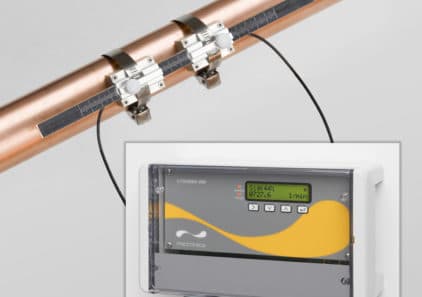
U1000MKII-FM-WM Clamp-on Flow Meter with Wall Mounted Keypad & Display
Read more -
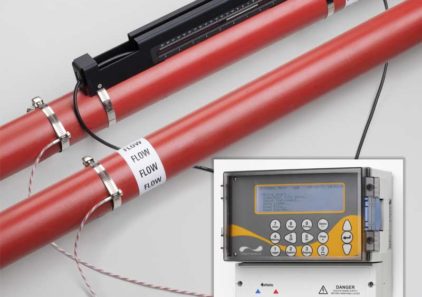
New UF3300 Fixed Clamp-on, Heat/Energy, Flow and Process Measurement Meter
Read more -
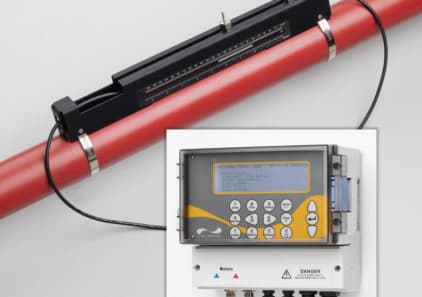
UF3300 NEW Ultraflo, Fixed Clamp-on Flow and Process Measurement Meter
Read more
Contact ultrasonic metering systems
Contact ultrasonic metering systems, as the name suggests, come into contact with the fluid being measured. These systems utilise mechanical sensors such as paddlewheels, turbines, or positive displacement meters to measure the flow of the fluid. Although these meters can provide accurate measurements, they are also prone to wear and tear and may require frequent calibration and maintenance.
Non-invasive ultrasonic metering systems
Non-invasive ultrasonic metering systems, on the other hand, do not come into contact with the fluid being measured. Instead, they use ultrasonic waves to measure the flow of fluids. These meters are also known as non-contact flow meters or non-invasive flow meters, and have become increasingly popular due to their accuracy, ease of installation, and low maintenance requirements.
These metering systems typically use either the Doppler effect or the transit-time method to measure the flow of fluids. Doppler flow meters use ultrasonic waves that bounce off particles or bubbles in the fluid and measure the change in frequency caused by the motion of the fluid. Transit-time flow meters use two ultrasonic waves that are transmitted in opposite directions and measure the difference in the travel time between the waves.
Advantages of non-invasive ultrasonic metering systems
One of the main advantages of non-invasive ultrasonic metering systems is their ability to provide accurate measurements of fluids containing particles or bubbles, which can interfere with the accuracy of contact ultrasonic metering systems. Non-invasive ultrasonic metering systems can also be used to measure the flow of corrosive or abrasive fluids, which can damage contact metering systems.
Another advantage of non-invasive ultrasonic metering systems is their ease of installation. Since these meters do not come into contact with the fluid being measured, they can be easily installed without the need for cutting into pipes or disrupting the flow of the fluid. This can save time and money during installation and also minimize the risk of leaks or contamination.
Non-contact metering systems also require less maintenance than contact ultrasonic metering systems. Since they do not have mechanical parts that come into contact with the fluid, they are less prone to wear and tear and do not require frequent calibration. This can reduce maintenance costs and downtime, and increase the overall efficiency of the system.
Non-invasive ultrasonic metering systems are widely used in a variety of industries, including water treatment, chemical processing, and oil and gas production. They are also used in HVAC systems to measure the flow of air and ensure optimal temperature control.
However, non-contact ultrasonic metering systems do have some limitations. They may not be suitable for measuring the flow of fluids at very low velocities or when the fluid is highly viscous or has a low density.
They are becoming increasingly important as industries strive to reduce their environmental impact and minimize waste.
Non-invasive ultrasonic metering systems, in particular, have become increasingly popular due to their accuracy, ease of installation, and low maintenance requirements. By utilising ultrasonic waves to measure the flow of fluids these are an ideal solution for those seeking an accurate and low-maintenance flow metering system.
CASE STUDY
Vertex Building Services Ltd
Micronics heatmeters collect usage data in prestigious, London office building. The new U1000MKII-HM is a “Best Value” Clamp-on, Ultrasonic heat meter alternative to traditional inline energy meters. It provides reliable energy management and billing applications in domestic and commercial, district or shared heating or cooling systems.
TESTIMONIAL
“I was impressed with Micronics products and therefore had complete confidence that the U1000 heatmeters would perform flawlessly and deliver the data required for this long-standing client. Vertex won this contract following a lengthy tender process so we were doubly determined to do a perfect job and therefore needed to have that confidence.”
Vertex Building Services Ltd